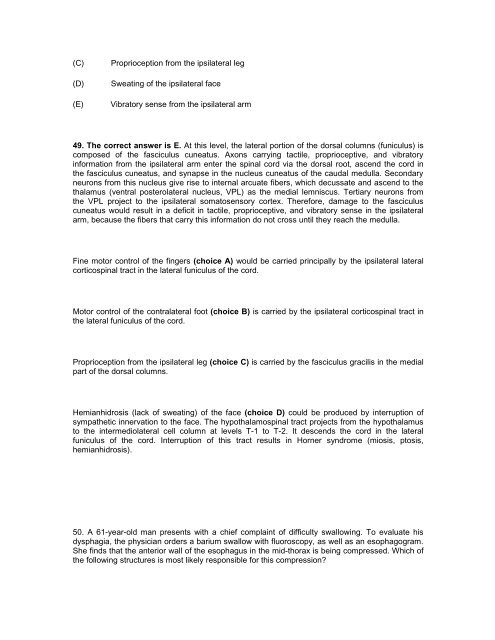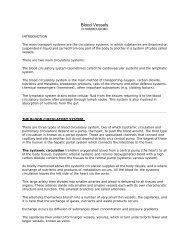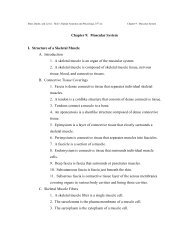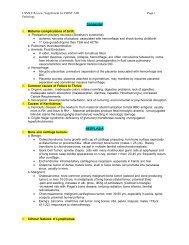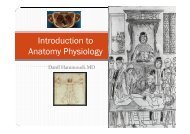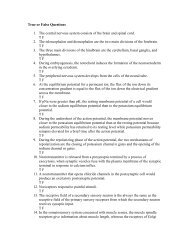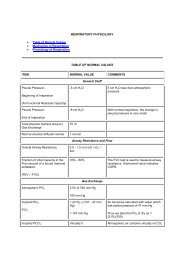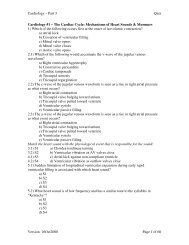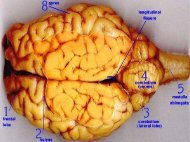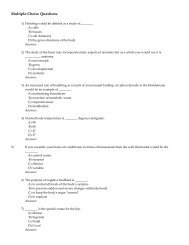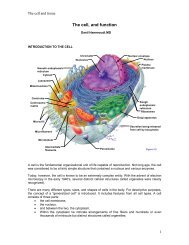L:\usmle review 7 - Sinoe medical homepage.
L:\usmle review 7 - Sinoe medical homepage.
L:\usmle review 7 - Sinoe medical homepage.
Create successful ePaper yourself
Turn your PDF publications into a flip-book with our unique Google optimized e-Paper software.
(C)<br />
(D)<br />
(E)<br />
Proprioception from the ipsilateral leg<br />
Sweating of the ipsilateral face<br />
Vibratory sense from the ipsilateral arm<br />
49. The correct answer is E. At this level, the lateral portion of the dorsal columns (funiculus) is<br />
composed of the fasciculus cuneatus. Axons carrying tactile, proprioceptive, and vibratory<br />
information from the ipsilateral arm enter the spinal cord via the dorsal root, ascend the cord in<br />
the fasciculus cuneatus, and synapse in the nucleus cuneatus of the caudal medulla. Secondary<br />
neurons from this nucleus give rise to internal arcuate fibers, which decussate and ascend to the<br />
thalamus (ventral posterolateral nucleus, VPL) as the medial lemniscus. Tertiary neurons from<br />
the VPL project to the ipsilateral somatosensory cortex. Therefore, damage to the fasciculus<br />
cuneatus would result in a deficit in tactile, proprioceptive, and vibratory sense in the ipsilateral<br />
arm, because the fibers that carry this information do not cross until they reach the medulla.<br />
Fine motor control of the fingers (choice A) would be carried principally by the ipsilateral lateral<br />
corticospinal tract in the lateral funiculus of the cord.<br />
Motor control of the contralateral foot (choice B) is carried by the ipsilateral corticospinal tract in<br />
the lateral funiculus of the cord.<br />
Proprioception from the ipsilateral leg (choice C) is carried by the fasciculus gracilis in the medial<br />
part of the dorsal columns.<br />
Hemianhidrosis (lack of sweating) of the face (choice D) could be produced by interruption of<br />
sympathetic innervation to the face. The hypothalamospinal tract projects from the hypothalamus<br />
to the intermediolateral cell column at levels T-1 to T-2. It descends the cord in the lateral<br />
funiculus of the cord. Interruption of this tract results in Horner syndrome (miosis, ptosis,<br />
hemianhidrosis).<br />
50. A 61-year-old man presents with a chief complaint of difficulty swallowing. To evaluate his<br />
dysphagia, the physician orders a barium swallow with fluoroscopy, as well as an esophagogram.<br />
She finds that the anterior wall of the esophagus in the mid-thorax is being compressed. Which of<br />
the following structures is most likely responsible for this compression


